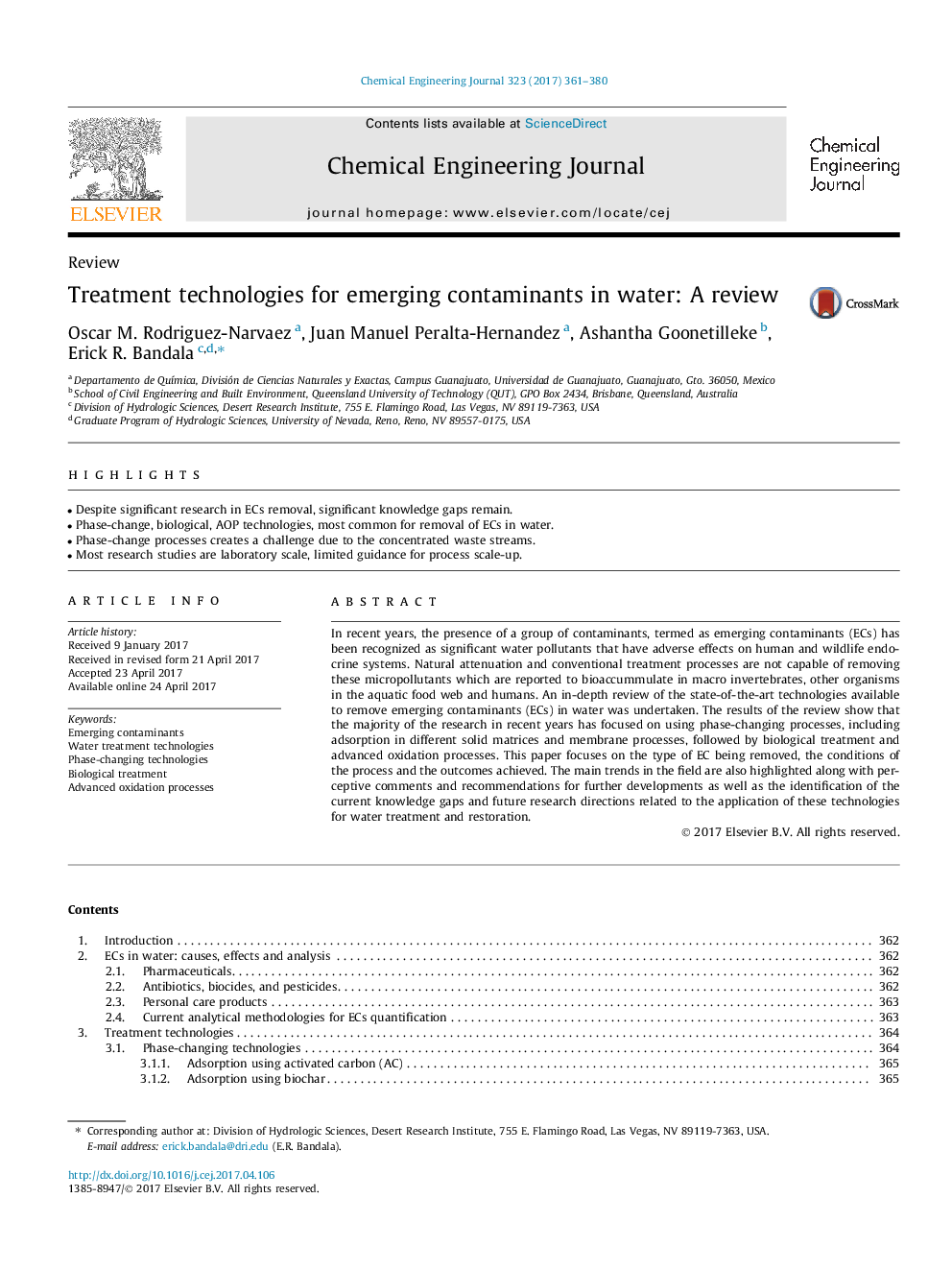| Article ID | Journal | Published Year | Pages | File Type |
|---|---|---|---|---|
| 4763029 | Chemical Engineering Journal | 2017 | 20 Pages |
Abstract
In recent years, the presence of a group of contaminants, termed as emerging contaminants (ECs) has been recognized as significant water pollutants that have adverse effects on human and wildlife endocrine systems. Natural attenuation and conventional treatment processes are not capable of removing these micropollutants which are reported to bioaccummulate in macro invertebrates, other organisms in the aquatic food web and humans. An in-depth review of the state-of-the-art technologies available to remove emerging contaminants (ECs) in water was undertaken. The results of the review show that the majority of the research in recent years has focused on using phase-changing processes, including adsorption in different solid matrices and membrane processes, followed by biological treatment and advanced oxidation processes. This paper focuses on the type of EC being removed, the conditions of the process and the outcomes achieved. The main trends in the field are also highlighted along with perceptive comments and recommendations for further developments as well as the identification of the current knowledge gaps and future research directions related to the application of these technologies for water treatment and restoration.
Keywords
Related Topics
Physical Sciences and Engineering
Chemical Engineering
Chemical Engineering (General)
Authors
Oscar M. Rodriguez-Narvaez, Juan Manuel Peralta-Hernandez, Ashantha Goonetilleke, Erick R. Bandala,
